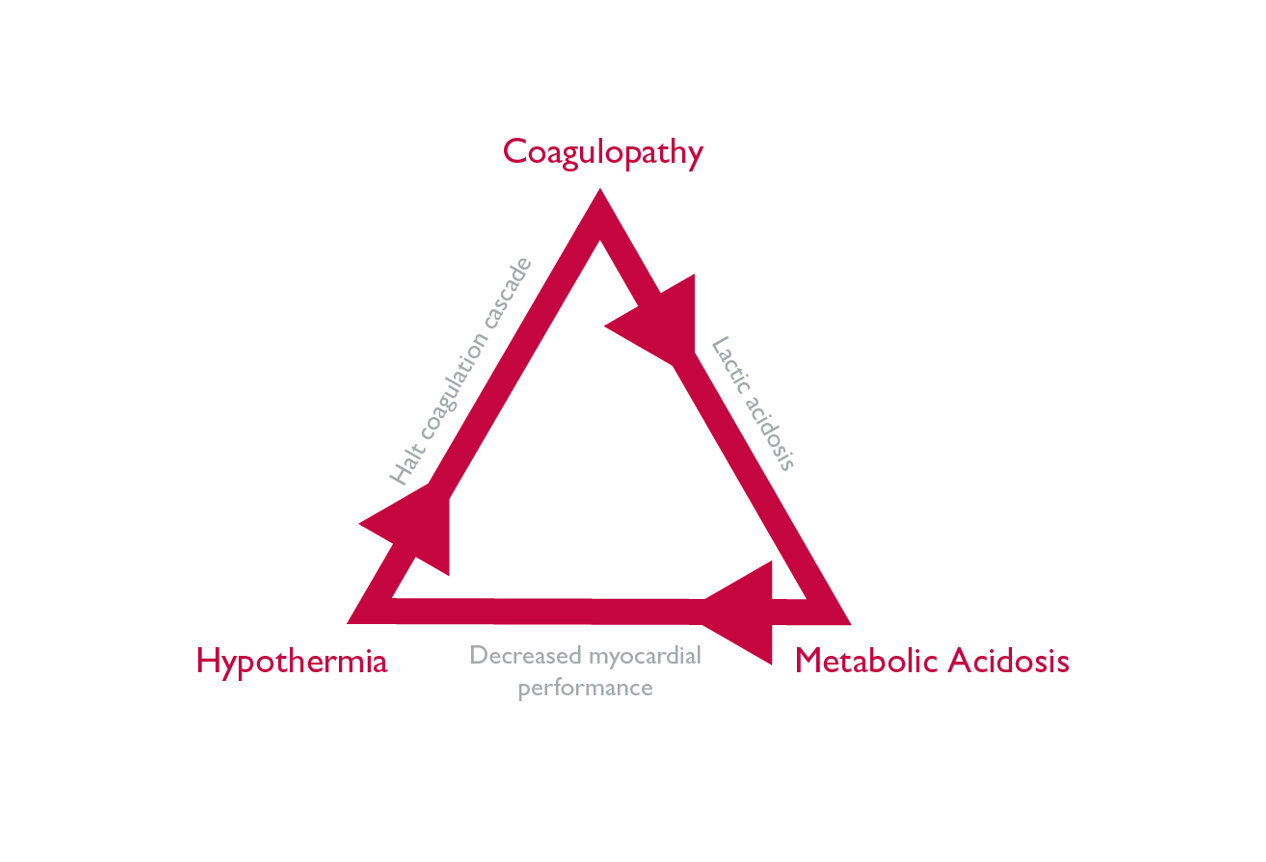
22/12/2021
Hypothermia in the trauma casualty and the latest TCCC guidance
Why is Hypothermia in trauma patients dangerous?
Hypothermia is widely recognised, alongside acidosis and coagulopathy, as a component of ‘the lethal triad’ that results in poor outcomes for trauma patients. Current literature suggests hypothermia exacerbates the derangement of clotting pathways. This is especially significant in the context of trauma, where 40% of all deaths directly result from haemorrhage. Traditionally, trauma management focuses on the treatment of acute haemorrhages, such as haemostasis through mechanical compression or antifibrinolytic drugs, i.e Tranexamic Acid. However, a heightened understanding of the lethal triad promotes the need to clinically address additional factors that result in trauma mortality to significantly improve patient outcomes. Previous research has shown increased survival rates for trauma patients, in whom preventative measures were taken prior to the initiation of the downwards spiral of coagulopathy and haemorrhage triggered by the lethal triad.
The Tactical Combat Casualty Care guidelines are an important set of guidelines that are widely adopted by organisations throughout the world that could be faced with combat type casualties. TCCC have revised their guidance on the management of hypothermia at the tactical field care and evacuation care phases of treatment. Interestingly, hypothermia is the third most frequent life-saving intervention in battlefield casualties after vascular access and haemorrhage control. This only goes to highlight the importance of how we address this potentially lethal condition in the trauma casualty.
“In both military and civilian trauma, it has been reported that 100% mortality occurred when core temperature is less than 32°C”.
B.L Bennett, G Giesbrecht K Zafren et al. Management of Hypothermia in Tactical Combat Casualty Care. Journal of Special Operations Medicine, September 2020, Volume 20, Edition 3. 21- 25.
Hypothermia prevention guidelines at tactical field care & evacuation care
- Take early and aggressive steps to prevent additional body heat loss and add external heat, where possible, for trauma and severely burned casualties.
- Minimise casualty’s exposure to cold ground, wind, and air temperatures. Place insulation material between the casualty and any cold surface as soon as possible. Keep protective gear on or with the casualty, if feasible.
- Replace wet clothing with dry clothing, if possible, and protect from additional heat loss.
- Place an active heating blanket on the casualty’s anterior torso and under the arms in the axilla (to prevent burns, do not place any active heating source directly on the skin or wrap around the torso).
- Enclose the casualty in the exterior impermeable enclosure bag.
- As soon as possible, upgrade a hypothermia enclosure system to a well-insulated enclosure system using a hooded sleeping bag, or other readily available insulation, inside the enclosure bag/external vapour-barrier shell.
- Place inside an insulated hypothermia enclosure system with external active heating for the transition from the non-insulated hypothermia enclosure systems; seek to improve on existing enclosure systems, where possible.
- Use a battery-powered warming device to deliver IV resuscitation fluids, in accordance with current TCCC guidelines, at a flow rate up to 150mL/min with a 38°C (100°F) output temperature.
- Protect the casualty from exposure to wind and precipitation on any evacuation platform.
How the Xtract™SR Heatsaver can support TCCC guidelines
We challenged ourselves to produce a pragmatic research-led solution that was small and lightweight. Extensive prototype testing in cold rooms, supervised and directed by subject matter experts, provided a robust platform to form our evidence.
We created the Xtract™SR Heatsaver. It is a major advancement in improving overall patient care in complex environments and the management of hypothermia. This unique product tackles all the causes of heat loss in the seriously injured casualty within an acceptable size and weight bracket.
The patent-pending design includes sculpted insulation panels that maximise thermal efficiency around the body's core allowing us to produce a product of minimal size and weight without compromising efficiency.
Contact us to book your complimentary seminar on hypothermia management and the Xtract®SR Heatsaver.
TSG Associates on 01422 557784. www.tsgassociates.co.uk
Image Source: Unsplash










